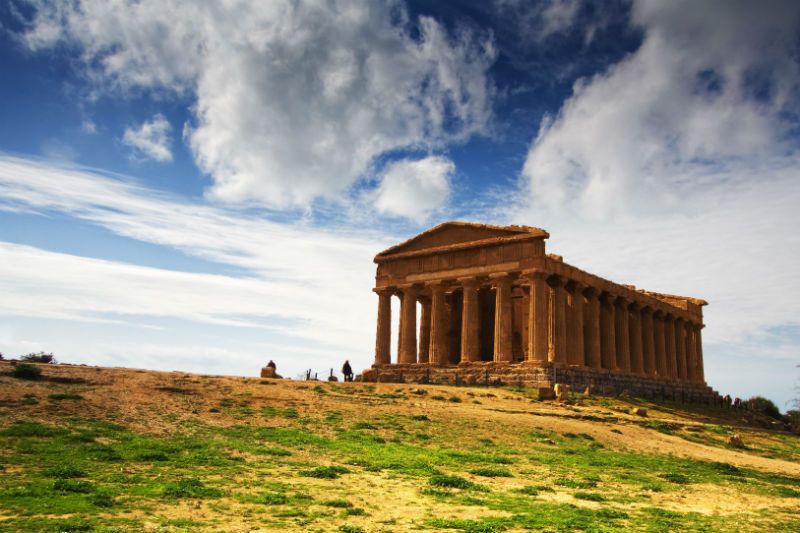
Owing to its location, Sicily has always enjoyed a role as a meeting place between the European west and the Arabic east, and this long history of diversity is reflected in its cultural and artistic heritage which features Doric temples, Roman mosaics, and numerous Baroque and Renaissance palaces and chapels.
A fine example of the Roman history of the island is the Piazza Amerina close to Syracuse, where you can find a lavish Roman villa with perfectly restored mosaics across the floors. Architecturally and historically, Sicily is perhaps most famous for its Greek temples such as the one in Syracuse, a town which can trace its history right back to the Greek mathematician Archimedes whose tomb can be found in the Grotticelli Necropolis. Syracuse also hosts dozens of other Greek and Christian monuments, with surviving frescoes and paintings by the likes of Caravaggio and his acolyte Minniti.
The special light and dramatic scenery found in Sicily made the island a magnet for artists throughout the ages, and it is nowadays home to many great galleries. The Galleria Regionale di Palazzo Bellomo, also in Syracuse, dates back to the 13th century and is home to a diverse collection of medieval and modern pieces of both painting and sculpture, while the Francesco Pantaleone Arte Contemporanea is a must-see gallery for fans of more contemporary work.